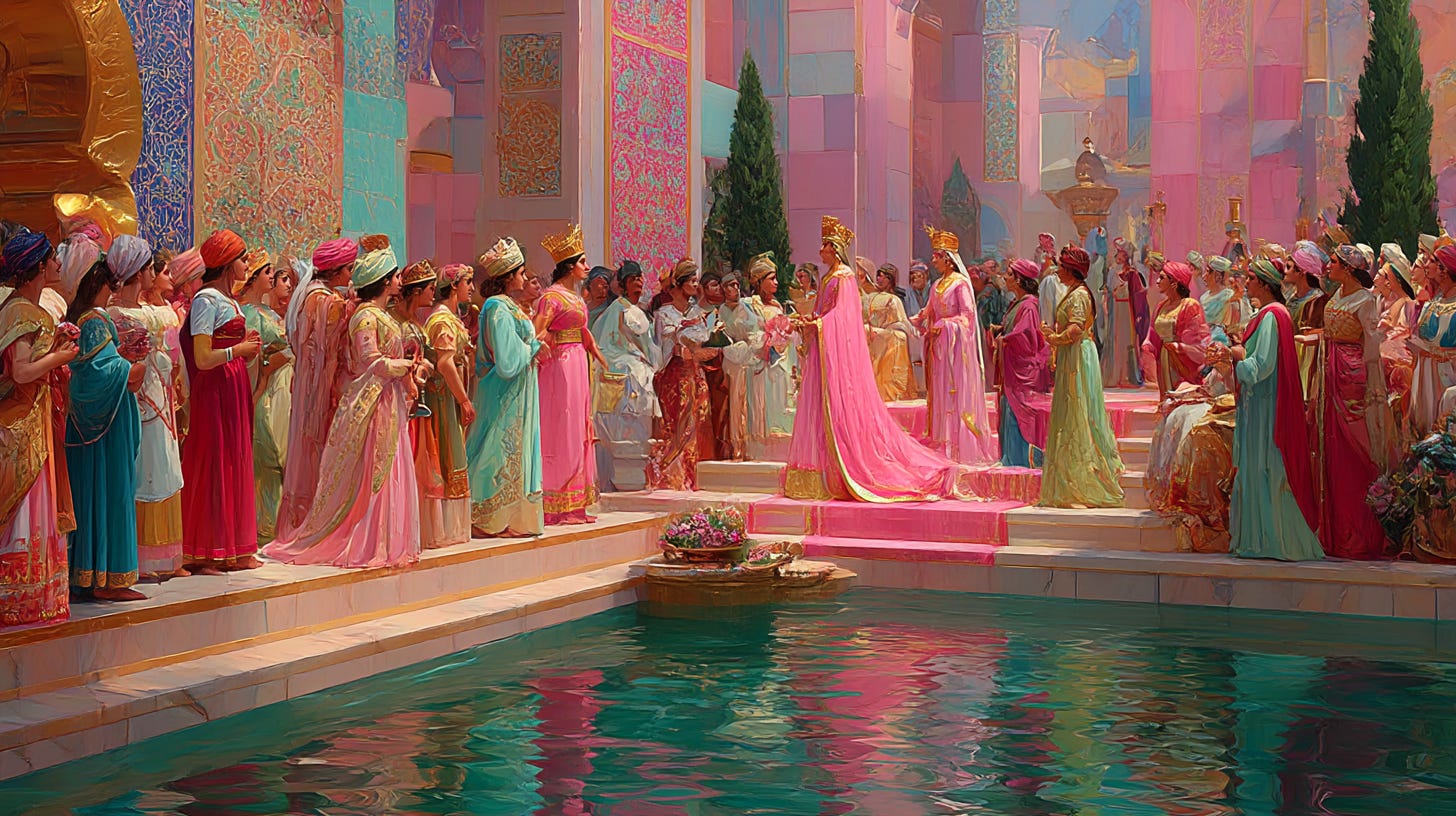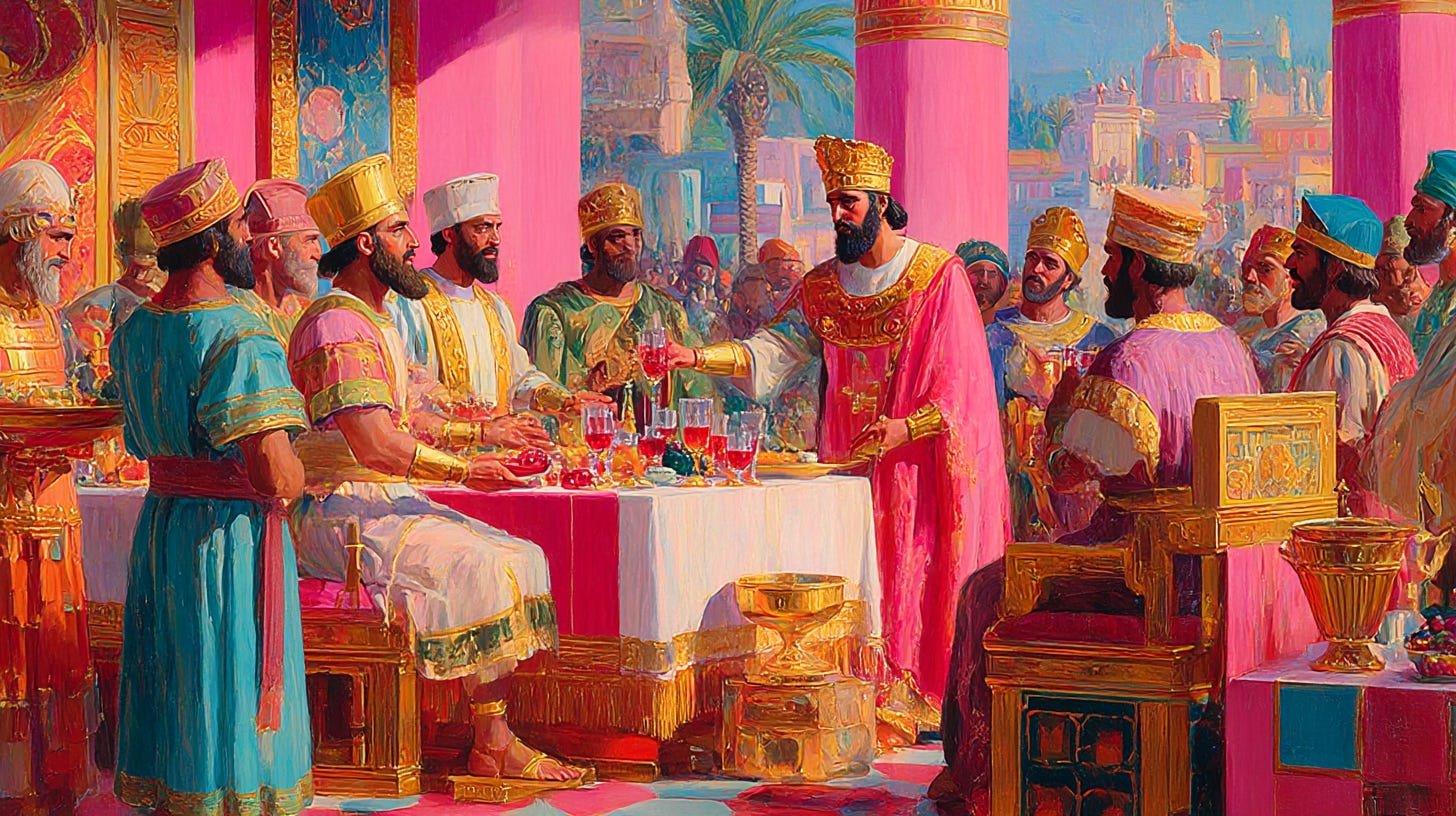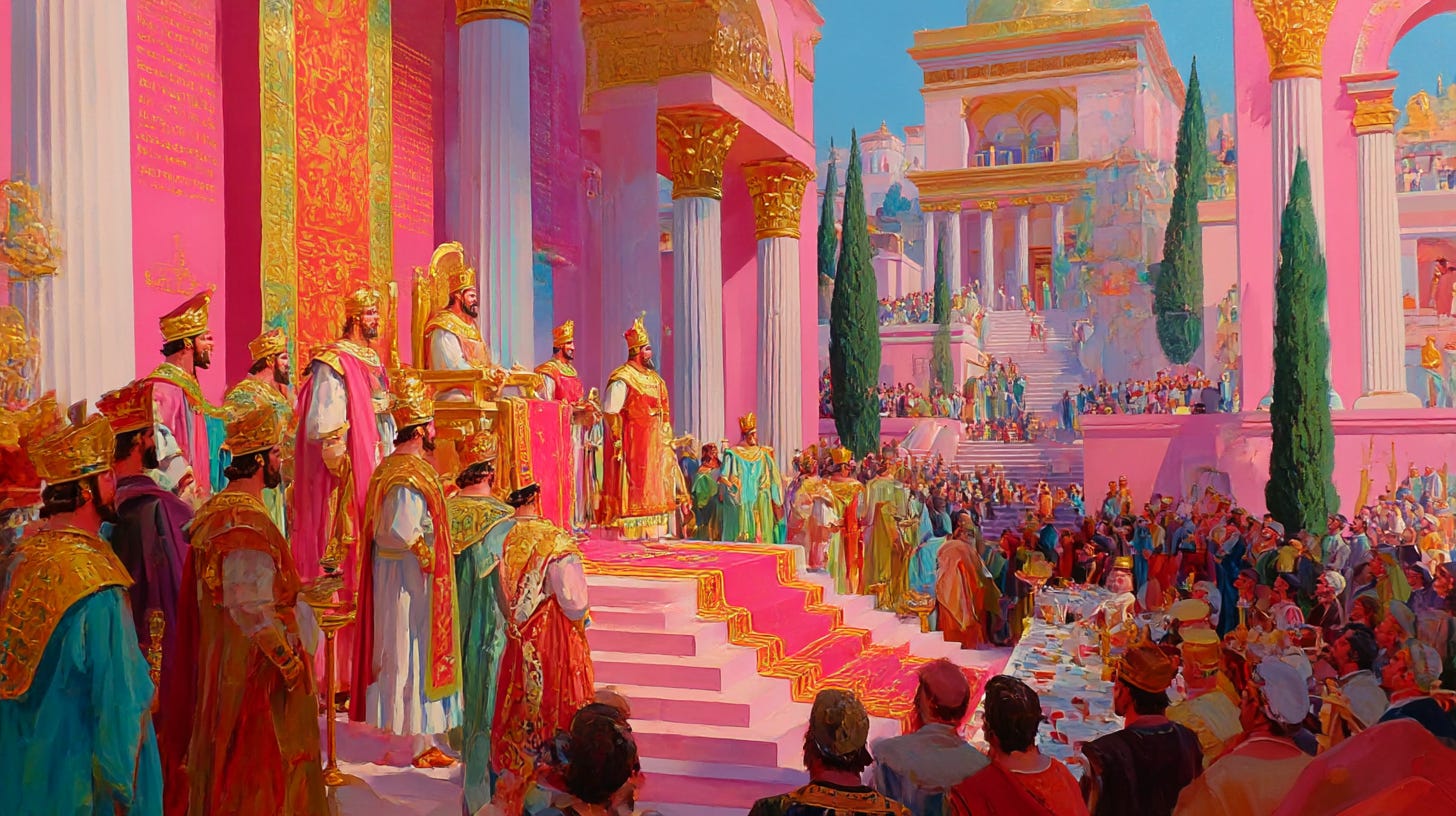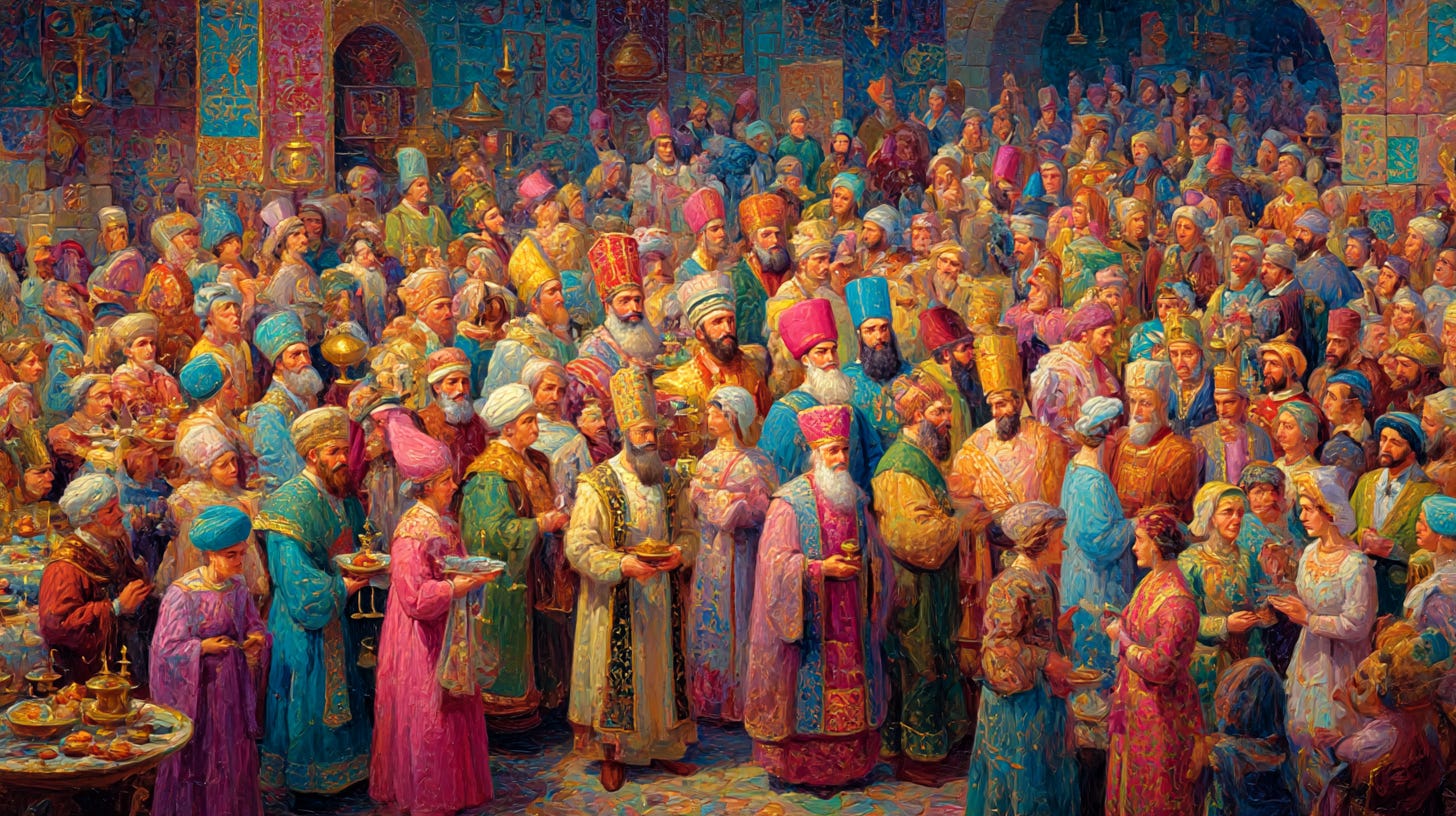In the empire of ancient Persia, where kings ruled from golden thrones and the fate of nations could turn on a whim, a hidden story unfolds—one of courage, quiet providence, and the unseen hand of God. This is the story of Esther, a young Jewish woman whose bravery changed the course of history.
A Banquet and a Fall
The story begins in the palace of King Ahasuerus (also known as Xerxes), who reigned “over one hundred twenty-seven provinces from India to Ethiopia” (Esther 1:1). The king, in all his grandeur, threw a massive feast that lasted 180 days, followed by another weeklong banquet for everyone in the capital city of Susa.
On the final day, the king, “merry with wine” (Esther 1:10), ordered Queen Vashti to appear and show off her beauty to the guests. But Vashti refused. In his fury, Ahasuerus deposed her.
A search was made for a new queen, and young women from across the empire were brought to the palace.
Esther: Hidden and Chosen
Among those brought was Esther, “an orphaned Jewish girl” raised by her cousin Mordecai (Esther 2:7). Esther was beautiful and wise. She kept her Jewish identity secret, as Mordecai had instructed.
“When the king saw Esther…she won his favor and devotion…and he set the royal crown on her head and made her queen” (Esther 2:17).
Shortly after, Mordecai uncovered a plot to assassinate the king. He told Esther, who informed Ahasuerus. The plot was foiled and recorded in the royal annals—though Mordecai received no reward at the time.
The Rise of Haman and a Deadly Plot
Enter the villain: Haman, a high official who was promoted above all other nobles. The king commanded everyone to bow to him—but Mordecai refused. “He would not bow down or do obeisance” (Esther 3:2), because he was Jewish and would not worship any man.
Enraged, Haman sought revenge—not just on Mordecai but on all Jews in the empire.
He convinced the king that the Jews were “a certain people…who do not keep the king’s laws” (Esther 3:8), and secured a decree to annihilate all Jews—young and old, on a single day. The date was chosen by casting lots, or Purim, as it was called.
Mordecai tore his clothes, put on sackcloth, and sent word to Esther. Though she was queen, approaching the king without being summoned could mean death.
“For Such a Time as This”
Esther hesitated. But Mordecai sent this famous message:
“Who knows? Perhaps you have come to royal dignity for such a time as this” (Esther 4:14).
Courage stirred in Esther’s heart. She asked Mordecai to gather all the Jews of Susa to fast for three days, and she would do the same. Then, she said, “I will go to the king, though it is against the law; and if I perish, I perish” (Esther 4:16).
A Risky Entrance and a Clever Plan
On the third day, Esther put on her royal robes and entered the king’s hall. He welcomed her, saying, “What is it, Queen Esther? What is your request?” (Esther 5:3).
Instead of immediately pleading for her people, Esther invited the king and Haman to a banquet. There, she invited them again to a second banquet the next day.
Haman left the banquet proud—but his rage returned when he saw Mordecai still refusing to bow. He built a gallows, 75 feet high, intending to hang Mordecai.
God’s Hidden Hand Revealed
That night, the king couldn’t sleep. He asked for the royal records to be read aloud—and just so happened to hear the part about Mordecai saving his life. “What honor or distinction has been bestowed on Mordecai for this?” the king asked. “Nothing has been done for him” (Esther 6:3).
In a delicious twist of irony, the king ordered Haman—the very man who planned Mordecai’s death—to publicly honor him. Haman was humiliated.
Esther Speaks and Justice Prevails
At the second banquet, the king again asked, “What is your petition, Queen Esther?” (Esther 7:2). This time, Esther revealed everything:
“We have been sold, I and my people, to be destroyed…If we had been sold merely as slaves, I would have held my peace…But no enemy can compensate for this damage to the king.”
(Esther 7:4)
The king, shocked, asked, “Who is he, and where is he, who has presumed to do this?”
Esther pointed: “A foe and enemy, this wicked Haman!” (Esther 7:6).
Haman was taken away and hanged on the very gallows he had prepared for Mordecai (Esther 7:10).
A New Decree and a Great Reversal
Though Haman was gone, the previous decree to destroy the Jews couldn’t be revoked. But the king issued a new one, giving the Jews the right to defend themselves.
And they did. When the day arrived, “the Jews gained mastery over those who hated them” (Esther 9:1). Mordecai was promoted, and Esther’s people were saved.
The Festival of Purim
To remember this great deliverance, the Jews established the feast of Purim—named after the lots Haman had cast.
“They should make them days of feasting and gladness, days for sending gifts…to one another and presents to the poor.”
(Esther 9:22)
The Message: God in the Silence
God is never mentioned in the Book of Esther. Not by name. Not in prayer. Not in prophecy. But make no mistake—He is there. In every twist of fate, every sleepless night, every moment of courage, we see God’s providence.
Esther reminds us that God doesn’t always act with thunder and miracles. Sometimes, He moves quietly—through the choices of ordinary people placed in extraordinary moments.
So if you’re in a season where God seems silent, remember Esther. He may be working behind the scenes, positioning you “for such a time as this.”









